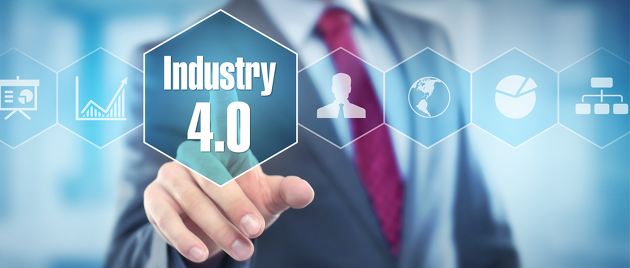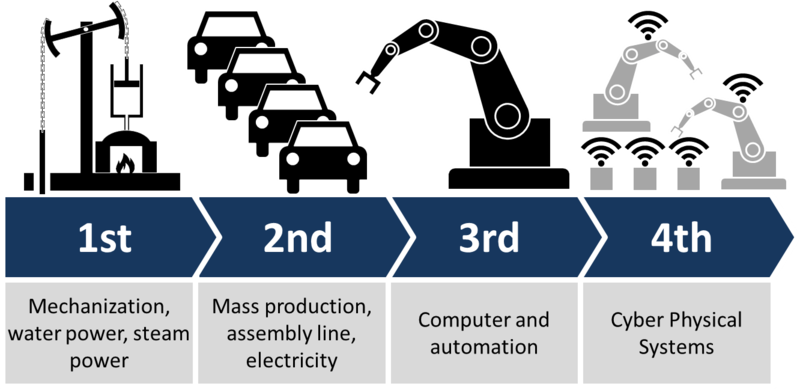 |
The fourth industrial revolution has been all over the media these days and with good reason. Any nation wishing not to be left behind in the race to an automated, smart future needs to prepare itself for the race towards the crest of the next big wave to the future The fourth industrial revolution encompasses information and communication technologies, such as AI (computer programs that use human learning and reasoning abilities, perceptual abilities, and language abilities), IOT (intelligent technology and services that connect all devices to the Internet to communicate information between people and their devices), cloud computing (technology that can process information from any computer connected to the Internet), big data ( technology that stores, manages, and analyzes huge amounts of data), and mobile tech. The convergence of these technologies - along with new technologies, such as 3D printing, robotics, biotechnology, and nanotechnology – will profoundly alter our economy and society. Industry, services, the way we perceive the world and each other is set to change. If we don’t prepare for this change, we’ll be left behind.
 |
Some countries, such as the U.S. and Japan, have been developing technology linked to the fourth industrial revolution for decades.
In the U.S., IBM, Amazon, Microsoft, and Google are representative. IBM developed Watson, an artificial intelligence, and it won the 2012 Jeopardy Quiz show, beating its human opponents. Watson was also used for medical purposes as it was able to store up to 15 million pages of medical information, including 300 medical journals and 200 medical textbooks. One only had to enter a patients test results for Watson to offer a diagnosis: Watson had a diagnostic accuracy of 98% for colorectal cancer, 94% for pancreatic cancer, and 100% for cervical cancer. Watson’s real strength though was its speed and accuracy. It could read and analyze 70,000 papers in a month and identified six proteins that affected the anticancer gene. Amazon, the world's largest Internet on-line vendor, is also profiting from robot technology due to its purchase of the robotics company KIVA Systems, in 2012, for $ 750 million (850 billion won) to develop robots for logistical automation. Amazon has already developed a robot that can classify and organize products faster, and with less errors, than a human. The company’s logistical costs are expected to drop from $900 million to $450 million. Microsoft launched an AR (augmented reality – your immediate environment is scanned to allow virtual images to be superimposed on the real world) device in the form of glasses called Hololens. For example, whilst watching a football match on TV, information about a player will appear on the lenses of the glasses. Indeed, the practical applications of Hololens are vast - fields such as architecture, civil engineering, manufacturing, gaming, and national defense could all benefit from this tech. Hololens hit the American market in August 2016, for the price of $3000, and thousands have been sold as of February 2017.. Where Google is concerned autonomous car (self-driving cars) development has been a major focus. From 2009 to 2015, after some 2.8 million kilometers of test driving, only 14 accidents have occurred. None of these accidents, however, was due to a failure of a car’s automated systems. Google is planning to make driverless cars available to the public by 2020.
In the case of Japan, Sony has been busy ushering in the fourth industrial revolution, with the development of Pepper and Playstation VR (virtual reality). Pepper is a household humanoid robot released by Sony in 2015. Pepper’s most remarkable feature is its capacity to recognize human emotions. It has four microphones, two cameras, a 3D sensor, touch sensor, laser sensor, sound sensor, and gyroscope to gather and respond to situational information. For instance, if you ask for a handshake, Pepper sticks out its hand and responds according to your tone and facial expression. If you force a smile, Pepper says, "Your eyes are not smiling." Despite a cost of $2000, 7000 Peppers have already been sold. Sony’s Playstation VR is a headset that connects to the PlayStation 4. The headset cuts out an view of the outside an instead renders the environment of a game, which gives gamers the sense of being immersed in the game’s world – hence, virtual reality. Movies can also be viewed using the headset. Playstation VR was released in October 2016 and sold 915,000 units in its first five months on sale.
The real question here, however, should be what is Korea doing to prepare for the fourth industrial revolution? According to a report by the World Economic Forum 2016, Korea ranked 25th in the field of readiness index for the Fourth Industrial Revolution, which is very low when judged against the nation’s current economic and technological robustness. In terms of artificial intelligence, there are 26 public research institutes in Korea, including the Korea Electronics and Telecommunications Research Institute, which has created the AI ‘Exobrain’. ‘Exobrain’ can call on the knowledge contained in 500,000 books, which would take a person 2000 years to learn. Yet, this is considered to lag behind the innovations of countries, such as the U.S.. As Watson has been put to use in five hospitals, including Gil Hospital, many Korean companies have stayed away from medical AI development in fear of being a latecomer. The AR/VR field is another story: Samsung Electronics is responsible for the development of bleeding edge AR/VR technology. However, the software and content lags far behind the capabilities of the hardware – simply put, nobody can yet harness the power of Samsung’s devices.. Where driverless cars are concerned, Hyundai & Kia Motors have been the heaviest investors but have much work to do to challenge Google and Tesla, the R&D leaders. However, the Korean car makers have developed quasi-autonomous navigation functions, such as cruise control and a lane departure alarm as well as Highway Driving Assist (HDA), an option in luxury cars. HDA recognizes lanes on a highway, steers the vehicle, and keeps it in the center of its lane. Hyundai & Kia are expecting to release to market a fully driverless car by 2030.
In order to explore the main obstacles facing Korea as it prepares for the impending fourth industrial revolution, the Inha Times interviewed computer science Professor Sang-gil Kang from Inha University.
Inha Times (IT): What is the Fourth Industrial Revolution?
Professor Kang: The fourth industrial revolution is related to the development of robots with advanced AI.
IT: What is the status of Korea compared to other countries in preparing for the fourth industrial revolution?
Professor Kang: Progressively speaking, our competitiveness lags far behind the leading countries. The U.S. has been studying artificial intelligence, or machine learning, for over 30 years. IBM's Watson was made over 10 years ago, Google's Alphago is a similar example. Korea is in the process of starting its development. Even in the case of smartphones, Korean companies didn’t care when they first appeared. Regarding the fourth industrial revolution, we are later runners playing catch up, but we are working hard.
IT: Because of the hard work being done to catch up with the leading countries, the word "공밀레"(Engineering +Emile Bell or Bell of King Seongdeok: meaning the extraordinary efforts of developers alludes to the Emile myth or sacrifice of a child) and "coding slave" have begun to appear. How can we improve this situation?
Professor Kang: I am not a business person or a policy maker, but I’ll give you a professor's point of view. So to speak, there is no big company cultivating the software industry. Most of them have been only taking care of hardware because it takes a lot of capital and time to see tangible achievements. Thus, companies think it is better to buy software from overseas, such as U.S.. To change this, companies need to invest heavily in the software industry. Also, policies that support a long-term roadmap to train machine learning specialists are needed rather than regime-changing short-term policies. If all of this occurs then developers will experience an vast increase in quality of life.
IT: Is there a particular research direction or a project that the Inha Computer Science Department or you are pursuing?
Professor Kang: Personally, I have a project with ETRI (Korea Electronics and Telecommunications Research Institute). In order to develop machine learning, smartphones need to be able to process big data. Therefore, we are researching lightweight technology that makes the cloud processing of big data possible and secure on smartphones. This technology does not yet exists, so we have a chance to become the global leaders.
The fourth industrial revolution is an inevitability and is a field looking to be led. Korea is bust maneuvering itself in to a leading position but still has some way to go. The promise of Moon Jae-in is a sign we are moving in the right direction.
이상민 0530ldsm@naver.com
<저작권자 © 인하프레스, 무단 전재 및 재배포 금지>

![[보도] 제43대 총학생회 후보자 공청회 개최돼](/news/photo/202404/11686_5015_2626.png) [보도] 제43대 총학생회 후보자 공청회 개최돼
[보도] 제43대 총학생회 후보자 공청회 개최돼
![[보도] 제43대 총학생회 후보자 공청회 개최돼](/news/thumbnail/202404/11686_5015_2626_v150.jpg)
![[보도] 총학생회장 선거 열려···학생사회 대표자는?](/news/thumbnail/202403/11668_5014_266_v150.jpg)
![[보도] 무전공·계열제 논의···학생은 어디에?](/news/thumbnail/202403/11666_5011_2238_v150.jpg)
![[보도] 인하 70돌, 다양한 행사 이어져](/news/thumbnail/202403/11663_5009_165_v150.jpg)
